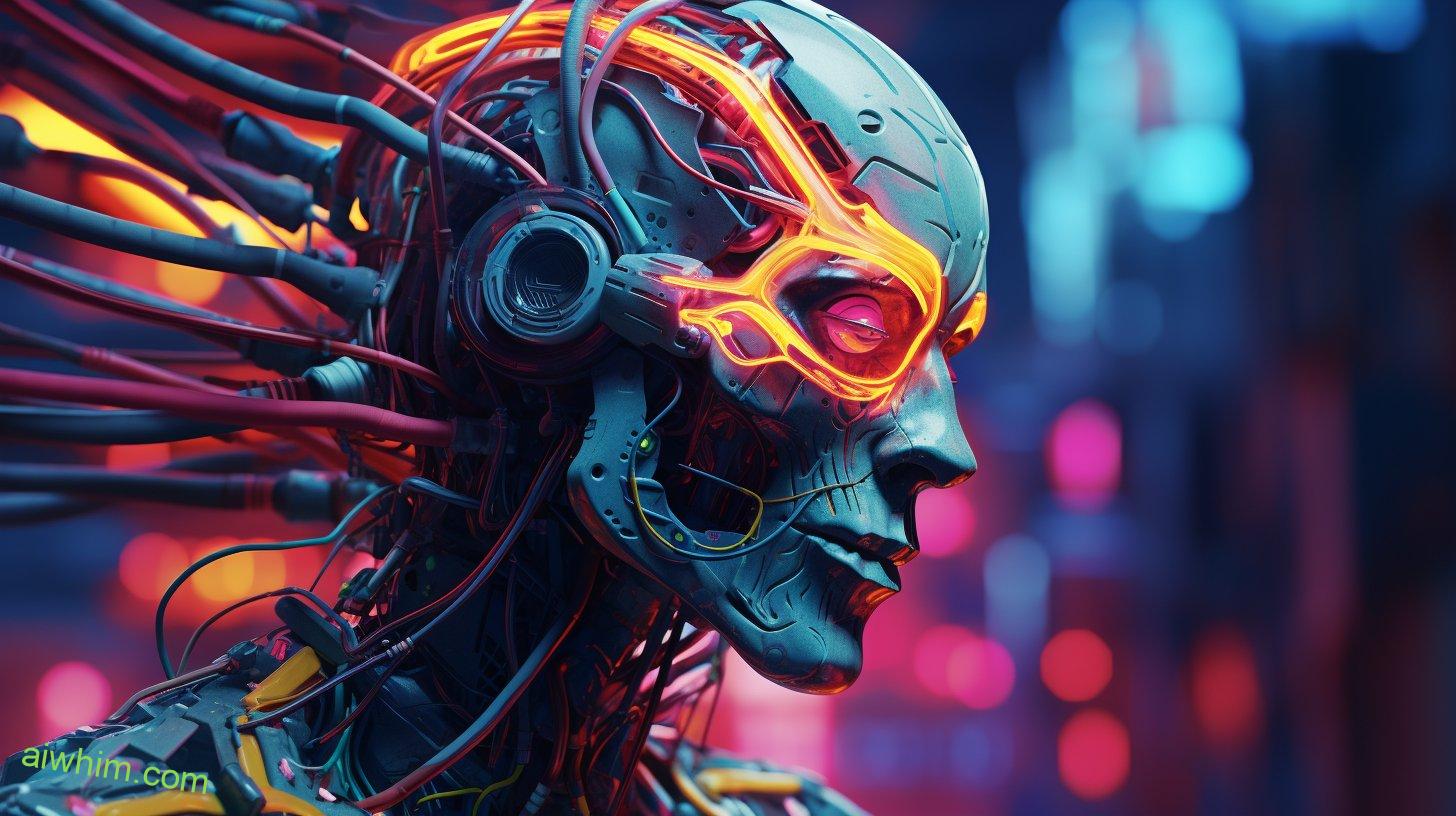Are you ready to explore the AI-driven revolution impacting the world of cartography and photogrammetry?
The advent of Artificial Intelligence has brought about significant advancements, reshaping traditional mapping techniques and transforming the roles of cartographers and photogrammetrists.
With AI-powered data collection methods and sophisticated terrain modeling, professionals in these fields are facing a paradigm shift.
But what are the advantages of integrating AI in mapping? And how can AI-based solutions address geospatial challenges?
In this discussion, we will delve into the changing landscape of cartography and photogrammetry, and explore the future prospects in this AI-driven era.
Get ready to navigate through the transformative changes and adapt to the evolving job market.
Key Takeaways
- AI revolutionizes the mapping process and data analysis in cartography and photogrammetry.
- AI algorithms automate tasks such as image classification, feature extraction, and point cloud generation, improving efficiency and accuracy.
- The integration of AI in mapping techniques enhances visualization, creates 3D representations, and simulates scenarios, making maps more comprehensive, accurate, and engaging.
- The role of cartographers and photogrammetrists is changing, with a focus on data analysis and interpretation, and there is an increasing demand for professionals with AI and automation skills in this field.

The Impact of AI on Cartography
AI has revolutionized the field of cartography, transforming the way cartographers create maps and analyze geographic data. The impact of AI on surveying can’t be overstated. With the advancements in technology, AI has brought remarkable changes to the process of collecting and interpreting data in the field of cartography.
One significant way AI has made its mark is in map interpretation. Traditionally, cartographers manually analyzed and interpreted satellite imagery, aerial photographs, and topographic maps to create accurate and detailed maps. However, AI algorithms can now automatically identify and classify features on these images, saving cartographers hours of manual work. This not only speeds up the mapping process but also increases accuracy and consistency in map creation.
AI has also brought about significant improvements in surveying. Surveyors use AI-powered tools to process vast amounts of data collected from GPS devices, remote sensing technologies, and other surveying equipment. These tools can quickly identify patterns and anomalies in the data, enabling surveyors to make more informed decisions. Additionally, AI can analyze historical data to predict future changes in the surveyed area, allowing cartographers to create more reliable and up-to-date maps.
The integration of AI into cartography has empowered cartographers and surveyors to focus on higher-level tasks that require human creativity and critical thinking. Instead of spending hours on repetitive data analysis, they can now invest their time and expertise in refining and improving the final maps.

Advantages of AI in Photogrammetry
With the integration of AI into cartography, photogrammetrists have also experienced numerous advantages in their field. AI applications have revolutionized the way photogrammetry works, particularly in the area of data processing. The use of AI algorithms has significantly improved the efficiency and accuracy of photogrammetric data processing, saving time and resources for professionals in the field.
One of the major advantages of AI in photogrammetry is the ability to automate repetitive tasks. Traditionally, photogrammetrists had to manually process large volumes of data, which was time-consuming and prone to human error. However, with AI, tasks such as image classification, feature extraction, and point cloud generation can now be automated. This not only saves time but also allows photogrammetrists to focus on more complex and creative aspects of their work.
Another advantage of AI in photogrammetry is its ability to handle large datasets. Photogrammetric projects often involve processing vast amounts of data, which can be overwhelming for human operators. AI algorithms, on the other hand, are capable of processing and analyzing large datasets quickly and accurately. This enables photogrammetrists to work with larger areas and higher resolution imagery, leading to more detailed and precise results.
Furthermore, AI can also assist in quality control and error detection. By analyzing patterns and anomalies in the data, AI algorithms can identify errors or inconsistencies that may have been overlooked by human operators. This ensures the accuracy and reliability of the final photogrammetric products.

Integration of AI in Mapping Techniques
The integration of AI into mapping techniques has revolutionized the way you approach your work. With the advancements in technology, cartographers now have access to powerful tools that can greatly enhance their mapping capabilities. Here are four ways AI is transforming mapping techniques:
- Data Integration: AI algorithms can process large amounts of data from various sources and integrate them into a cohesive map. This means you can easily incorporate data from satellite images, aerial surveys, and ground-based measurements, allowing for a more comprehensive and accurate representation of the area you’re mapping.
- Image Processing: AI algorithms can analyze and interpret images with remarkable precision. They can identify objects, classify land cover types, and even detect changes over time. This not only saves you time and effort but also ensures that your maps are up-to-date and reflect the most current information.
- Automated Feature Extraction: AI can automatically extract features from images, such as roads, buildings, and bodies of water. This eliminates the need for manual digitization, reducing the risk of human error and increasing productivity. You can focus more on analyzing the data and making informed decisions based on the extracted features.
- Enhanced Visualization: AI can generate visually appealing and informative maps by enhancing the visualization of data. It can highlight important features, create 3D representations, and even simulate different scenarios. This allows you to present your maps in a more engaging and impactful manner.

Changing Role of Cartographers and Photogrammetrists
As technology continues to advance, your role as a cartographer or photogrammetrist is undergoing significant changes. The evolving skillsets and job opportunities in this field reflect the growing influence of AI and automation.
With the integration of AI in mapping techniques, your expertise in traditional map-making and surveying is now complemented by the ability to analyze and interpret data using advanced algorithms.
The changing role of cartographers and photogrammetrists is characterized by a shift towards data analysis and visualization. This means that you won’t only be responsible for creating accurate and detailed maps but also for extracting valuable insights from the data collected.
AI-powered tools and software can now process large amounts of geographic data in a fraction of the time it would take a human, allowing you to focus on the interpretation and communication of the results.
These advancements in technology also open up new job opportunities for you. As companies and organizations increasingly rely on AI and automation for their mapping and surveying needs, there’s a growing demand for professionals who can effectively navigate these technologies.

AI-Powered Data Collection Methods
AI-powered data collection methods revolutionize the way cartographers and photogrammetrists gather information for mapping and surveying purposes. With the advent of AI-powered remote sensing technology, the process of collecting data has become more efficient and accurate. Here are four ways AI is transforming data collection in the field:
- Automated image analysis: AI algorithms can analyze vast amounts of aerial and satellite imagery, allowing cartographers and photogrammetrists to quickly identify relevant features for mapping. This saves time and reduces the need for manual inspection.
- AI-driven feature extraction: By utilizing machine learning algorithms, AI can automatically extract features from images, such as roads, buildings, and vegetation. This eliminates the need for manual digitization, making the mapping process faster and more precise.
- Real-time data collection: AI-powered drones equipped with sensors and cameras can collect data in real-time, providing instant updates on changes in the landscape. This allows cartographers and photogrammetrists to have up-to-date information for accurate mapping and surveying.
- Data fusion and integration: AI algorithms can integrate data from multiple sources, such as satellite imagery, LiDAR scans, and ground surveys, to create comprehensive and detailed maps. This fusion of data enhances the accuracy and completeness of the final mapping products.
AI-powered data collection methods provide cartographers and photogrammetrists with the freedom to focus on analyzing and interpreting data rather than spending countless hours on data collection. By leveraging AI technologies, mapping and surveying professionals can deliver more accurate and up-to-date maps, enabling better decision-making in various industries, from urban planning to disaster management.
The future of data collection in this field is undoubtedly driven by AI advancements, promising even more efficient and precise mapping solutions.

Enhancing Accuracy With AI Algorithms
Improving accuracy in mapping and surveying is made possible through the utilization of AI algorithms. With the advent of AI powered geospatial analysis and AI driven image processing, the field of cartography and photogrammetry has witnessed a significant shift towards more precise and reliable results.
AI algorithms have the ability to analyze vast amounts of geospatial data and extract valuable insights, enabling cartographers and photogrammetrists to create highly accurate maps and surveys. These algorithms can identify patterns, detect anomalies, and make predictions based on the data they process. By harnessing the power of AI, mapping professionals can enhance the accuracy of their work and provide more reliable information to their clients.
One of the key advantages of AI algorithms in mapping and surveying is their ability to process large volumes of data quickly and efficiently. Traditional methods of data analysis often require manual intervention and are time-consuming. However, AI algorithms can analyze thousands of images and data points in a matter of seconds, significantly reducing the time and effort required for mapping and surveying tasks.
Furthermore, AI algorithms can also improve the accuracy of image processing in mapping and surveying. These algorithms can automatically identify and rectify distortions in aerial or satellite images, ensuring that the resulting maps and surveys are more accurate and geographically precise. By eliminating human errors and biases, AI algorithms can provide a more objective and reliable representation of the real world.

AI-Driven Analysis of Geographic Data
AI algorithms revolutionize the analysis of geographic data, enabling cartographers and photogrammetrists to extract valuable insights and create highly accurate maps and surveys. With the power of AI-driven analysis, you can now process large volumes of geographic data more efficiently and effectively.
Here are four ways AI is transforming the field of geographic data processing and spatial analysis:
- Automated feature extraction: AI algorithms can automatically detect and extract various features from satellite imagery or aerial photographs, such as buildings, roads, and vegetation. This saves you time and effort, allowing you to focus on other important tasks.
- Enhanced data classification: AI techniques, such as machine learning, can classify geographic data into different categories based on specific characteristics. This helps in organizing and understanding the data, enabling you to make more informed decisions.
- Pattern recognition: AI algorithms can identify patterns and trends within geographic data that may not be immediately apparent to the human eye. By analyzing these patterns, you can uncover hidden relationships and gain valuable insights for urban planning, environmental monitoring, and other applications.
- Real-time analysis: AI-powered systems can process and analyze geographic data in real-time, allowing you to monitor changes and respond quickly. This is particularly useful for emergency response, transportation management, and natural disaster monitoring.

Automation in Cartographic Processes
With the advancements in AI-driven analysis of geographic data, automation has become an integral part of cartographic processes. Now, more than ever, you can automate your workflows and make use of AI-assisted cartographic tools to enhance your mapping skills and efficiency.
Gone are the days of manually creating maps and painstakingly adding every detail by hand. Thanks to automation, you can now streamline your cartographic processes and save precious time. By automating workflows, you can focus on the creative aspects of mapmaking, such as design and storytelling, while the AI takes care of the repetitive tasks.
AI-assisted cartographic tools offer a range of benefits. They can help you generate accurate and detailed maps by analyzing large amounts of geographic data in a fraction of the time it would take you to do it manually. These tools can also assist you in identifying patterns and trends in the data, allowing you to create maps that effectively communicate information to your audience.
Furthermore, automation can also improve the accuracy and consistency of your maps. By eliminating human error, AI can ensure that your maps are reliable and error-free, giving you confidence in the information you present.
Embracing automation in cartographic processes allows you to work smarter, not harder. It empowers you to focus on the creative aspects of map creation while AI handles the repetitive and time-consuming tasks. So, take advantage of AI-assisted cartographic tools and automate your workflows to unlock your true mapping potential.

AI Tools for Map Creation and Design
Take your map creation and design to the next level with the assistance of AI tools. These advanced technologies are revolutionizing the way maps are created and designed, making the process faster, more accurate, and more efficient.
Here are four ways AI tools can enhance your map creation and design:
- AI applications in urban planning: AI can analyze data from various sources, such as satellite imagery and demographic information, to provide valuable insights for urban planning. By using AI-driven algorithms, you can identify patterns, forecast trends, and make informed decisions about land use, transportation systems, and infrastructure development.
- AI-driven satellite imagery analysis: With AI tools, you can analyze large amounts of satellite imagery to extract relevant information for map creation. These tools can automatically detect and classify objects, such as buildings, roads, and vegetation, saving you hours of manual work. AI algorithms can also enhance image resolution and quality, ensuring your maps are detailed and visually appealing.
- Automated feature extraction: AI tools can automatically extract features from data sources, such as aerial photographs and LiDAR scans, and incorporate them into your maps. This includes identifying landmarks, water bodies, and topographic features, eliminating the need for manual digitization and reducing human error.
- Real-time data integration: AI tools can integrate real-time data, such as weather conditions, traffic updates, and social media feeds, into your maps. This allows you to create dynamic maps that provide up-to-date information to users, enhancing their navigation experience and decision-making.

Machine Learning in Photogrammetry
Machine learning enhances the accuracy and efficiency of photogrammetry techniques. By utilizing advanced algorithms, machine learning algorithms can improve the process of image reconstruction and feature extraction, allowing for more precise and detailed results.
In photogrammetry, image reconstruction is a critical step in creating accurate 3D models from 2D images. Machine learning algorithms can analyze large datasets and learn patterns that help in reconstructing images with greater accuracy. These algorithms can identify common features in multiple images, such as corners or edges, and use this information to create a more detailed and realistic representation of the scene.
Feature extraction is another area where machine learning plays a significant role in photogrammetry. Traditionally, feature extraction involved manually identifying and measuring specific points or objects in an image. However, machine learning algorithms can automate this process by learning to recognize and extract relevant features from images. This not only saves time but also improves the accuracy and consistency of the extracted features.
The integration of machine learning in photogrammetry techniques has revolutionized the field, allowing for more efficient and accurate data processing. With the ability to analyze large volumes of data and learn from patterns, machine learning algorithms can significantly reduce the time and effort required for image reconstruction and feature extraction tasks.

AI-Enabled Object Recognition in Mapping
The application of artificial intelligence in mapping has extended beyond image reconstruction and feature extraction, now incorporating AI-enabled object recognition. With the advancement of AI-powered geospatial mapping, the applications of AI in remote sensing have become more diverse and efficient. Here are four ways AI-enabled object recognition is revolutionizing the field of mapping:
- Accurate identification: AI algorithms can analyze satellite imagery and aerial photographs to identify and classify various objects on the Earth’s surface. From buildings and roads to vegetation and water bodies, AI can accurately recognize and label these objects, providing valuable information for mapping purposes.
- Automated mapping: AI-powered object recognition enables automated mapping processes, reducing the time and effort required by human cartographers. By automatically detecting and mapping objects, such as buildings or land use types, AI algorithms can generate maps quickly and with high accuracy.
- Enhanced data analysis: AI algorithms can analyze large volumes of geospatial data, extracting valuable insights and patterns. By recognizing objects in satellite images or LiDAR data, AI can help identify changes in land use, monitor urban growth, or track environmental changes, providing valuable information for decision-making processes.
- Improved disaster response: AI-enabled object recognition plays a crucial role in disaster response efforts. By quickly identifying damaged infrastructure, displaced populations, or areas affected by natural disasters, AI can help prioritize rescue and recovery operations, enabling more efficient and effective response efforts.
The incorporation of AI-enabled object recognition in mapping has revolutionized the way we analyze and understand our world. With its ability to accurately identify objects, automate mapping processes, enhance data analysis, and improve disaster response, AI is empowering cartographers and photogrammetrists to create more accurate and comprehensive maps, ultimately providing us with the freedom to explore and navigate our world with confidence.

AI-Assisted Terrain Modeling
AI-Assisted Terrain Modeling enhances the accuracy and efficiency of mapping by utilizing artificial intelligence algorithms to analyze and represent the Earth’s topographic features. With the advent of AI-powered terrain modeling, cartographers and photogrammetrists now have a powerful tool that can revolutionize the way they approach topographic mapping.
By harnessing the capabilities of AI, terrain modeling becomes more accurate and efficient. Traditionally, mapping terrain involved manual interpretation of data from aerial imagery and ground surveys. However, AI-assisted topographic mapping automates this process by using advanced algorithms to analyze large datasets and generate precise representations of the Earth’s surface.
One of the key benefits of AI-powered terrain modeling is its ability to handle vast amounts of data quickly. With AI algorithms, cartographers and photogrammetrists can process massive datasets in a fraction of the time it would take using traditional methods. This not only saves time but also allows for faster updates and revisions to topographic maps.
Furthermore, AI-assisted terrain modeling improves the accuracy of mapping. The algorithms used can identify and interpret subtle variations in the Earth’s topography, resulting in more precise representations of features such as mountains, valleys, and water bodies. This level of detail is crucial for various applications, including urban planning, disaster response, and environmental management.

AI-Based Solutions for Geospatial Challenges
To overcome geospatial challenges, AI-based solutions provide efficient and accurate methods for mapping and analyzing geographic data. These advanced technologies are revolutionizing the field of geospatial analytics and enabling professionals to tackle complex tasks with ease.
Here are four ways AI-powered solutions are transforming geospatial challenges:
- Automated Surveying: AI-powered surveying tools streamline the process of collecting data from the field. With the help of drones and satellite imagery, these solutions can quickly capture and analyze vast amounts of geospatial data. This not only saves time and resources but also ensures accurate and reliable results.
- Enhanced Data Analysis: AI algorithms can analyze massive datasets and extract valuable insights from geospatial data. By leveraging machine learning and deep learning techniques, these solutions can identify patterns, trends, and anomalies that human analysts may overlook. This enables better decision-making and planning for various industries, such as urban planning, agriculture, and disaster management.
- Real-time Monitoring: AI-based solutions enable real-time monitoring of geospatial data, allowing professionals to track changes and detect anomalies as they happen. This is particularly useful for monitoring natural disasters, environmental changes, and infrastructure developments. By providing timely alerts and notifications, these solutions help in proactive decision-making and response planning.
- Improved Accuracy and Precision: AI algorithms can significantly enhance the accuracy and precision of geospatial data analysis. By eliminating human errors and biases, these solutions deliver more reliable and consistent results. This is crucial for applications like land surveying, cartography, and transportation planning, where accuracy is of utmost importance.

Future Prospects for AI in Cartography
As the field of geospatial analytics continues to evolve and embrace AI-powered solutions, the future prospects for AI in cartography are promising. With advancements in technology, AI in cartography is expected to revolutionize the way maps are created, updated, and analyzed.
One of the key areas where AI will have a significant impact is in photogrammetry, the process of extracting geometric information from photographs. AI algorithms can analyze large quantities of aerial or satellite images and automatically generate accurate and detailed 3D models of the Earth’s surface. This can greatly enhance the efficiency and accuracy of map creation.
AI can also automate the process of identifying and classifying objects in images, such as buildings, roads, and vegetation. This won’t only save time and effort for cartographers but also enable faster updates to maps as new infrastructure is built or natural landscapes change.
Furthermore, AI can improve the quality of maps by integrating various data sources, such as satellite imagery, GPS data, and social media feeds. By analyzing these diverse datasets, AI algorithms can identify patterns, trends, and anomalies that may not be immediately apparent to human cartographers. This can lead to more comprehensive and insightful maps that reflect the dynamic nature of our world.
In addition to map creation, AI in cartography has the potential to enhance the accessibility and usability of maps. AI-powered applications can personalize maps based on individual preferences and needs, providing customized navigation routes, points of interest, and real-time updates. This can empower individuals to explore and navigate their surroundings with greater freedom and confidence.

Adapting to the AI-Driven Job Market
With the increasing integration of AI in cartography, professionals in the field must adapt to the evolving job market. Adapting to automation and incorporating AI in job training is crucial for staying relevant and competitive. Here are four key steps to help you navigate the AI-driven job market:
- Embrace continuous learning: As AI technology advances, it’s essential to continuously update your skills and knowledge. Seek out training programs and courses that focus on AI applications in cartography. By staying informed and up to date, you can position yourself as an expert in the field.
- Develop complementary skills: While AI can automate certain tasks, there will always be a need for human expertise. Focus on developing skills that complement AI, such as data analysis, problem-solving, and creative thinking. These skills will allow you to work alongside AI systems and add value to the cartography process.
- Emphasize adaptability and versatility: The AI-driven job market requires professionals who can adapt to new technologies and work in interdisciplinary teams. Be open to exploring different roles and responsibilities within your field. The ability to collaborate and adapt will make you a valuable asset to any organization.
- Leverage AI as a tool, not a threat: Instead of viewing AI as a threat to your job, see it as a tool that can enhance your work. Familiarize yourself with the AI tools and software used in cartography and learn how to leverage them effectively. By embracing AI and using it to your advantage, you can streamline your work processes and achieve better results.

Frequently Asked Questions
How Has the Role of Cartographers and Photogrammetrists Changed With the Integration of AI in Mapping Techniques?
The role of cartographers and photogrammetrists has transformed with the integration of AI-driven advancements in cartography. Your job responsibilities have changed, giving you more time for creative problem solving and analysis.
What Are Some AI-Powered Data Collection Methods Used in the Field of Cartography?
You can use AI powered remote sensing techniques, like satellite imagery analysis, to collect data for cartography. AI can also assist in feature extraction, making your job easier and more efficient.
How Do AI Algorithms Enhance Accuracy in Cartographic Processes?
AI algorithms enhance accuracy in cartographic processes by analyzing large amounts of data quickly and efficiently. They can identify patterns, correct errors, and improve precision, ultimately leading to more accurate and reliable maps for you to use.
What Are the Advantages of Using AI-Enabled Object Recognition in Mapping?
Using AI-enabled object recognition in mapping has several advantages. AI algorithms enhance accuracy by identifying and categorizing objects in real-time. This technology provides freedom to cartographers, improving efficiency and reducing manual labor.
How Can Cartographers and Photogrammetrists Adapt to the AI-Driven Job Market?
To adapt to the AI-driven job market, you must embrace upskilling opportunities. Challenges for traditional cartography arise, but by learning AI technologies and integrating them into your work, you can stay relevant and thrive.

Conclusion
As AI advances, cartographers and photogrammetrists find themselves navigating uncharted territories. With the integration of AI in mapping techniques, their roles are shifting from traditional map-making to harnessing the power of AI-assisted data collection and terrain modeling.
This technological revolution presents both challenges and opportunities, as cartographers and photogrammetrists must adapt to the AI-driven job market. Just like skilled navigators, they must chart a course that embraces the potential of AI while staying true to their expertise in creating accurate and insightful maps.







